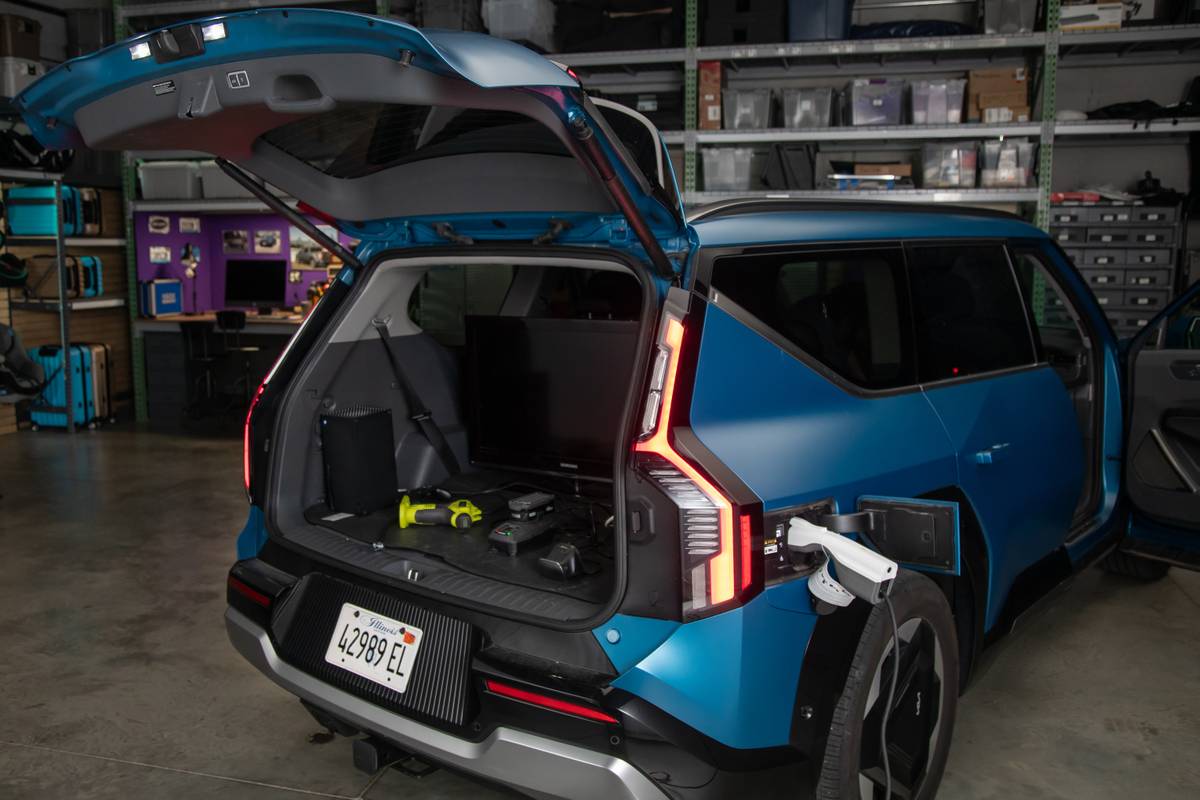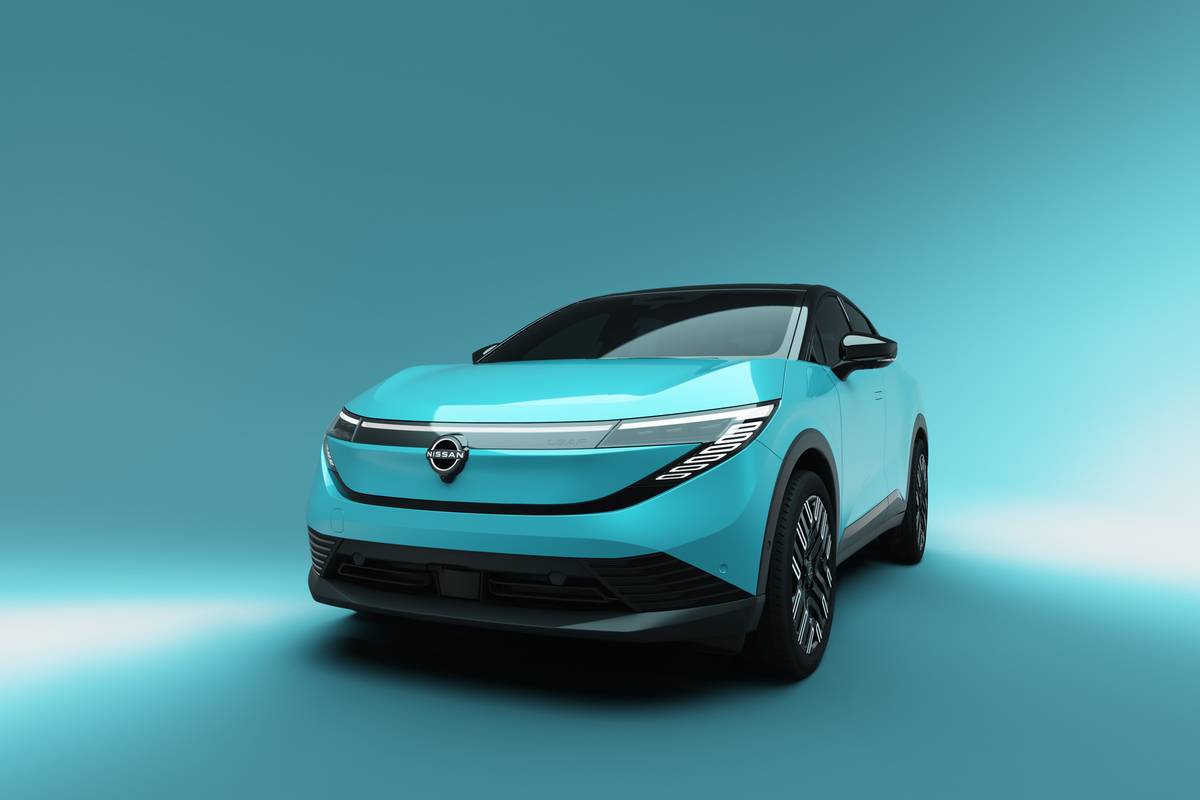chicagotribune.com's view
Durango, Grand Cherokee, Wrangler, Dakota, Ram, Caravan, Voyager, Town & Country.
Talk about a string of successes in sport-utilities, trucks and mini-vans.
But does Chrysler still make cars?
At a preview here of the new ’98 Dodge Durango (Cartalk, Oct. 5) and Dodge Ram Quad Cab, Chrysler slipped a couple of redesigned ’98 LH sedans–Dodge Intrepid and Chrysler Concorde–into the mix.
Sport-utes, trucks and mini-vans have been the focus the last few years, but Chrysler says it has at least 1.2 million reasons not to give up on cars: the 1.2 million folks who chose an LH rather than a Ford Taurus or Chevrolet Lumina since Chrysler brought out that sedan line in 1993.
For 1998 the sedans have been redesigned as well as upgraded so they boast even more stylish sheet metal, even more room and comfort and even more powerful, yet more fuel-efficient, engines.
Chrysler will offer four versions of the LH sedan–the Dodge Intrepid, Chrysler Concorde, Chrysler LHS and Chrysler 300M. It was to have offered a fifth, the 1999 Eagle Vision next fall, but decided to drop the Eagle line after the 1998 model run.
Intrepid, in base and ES trim, and Concorde, in base and LXi trim, arrive first–Intrepid Nov. 1, Concorde Dec. 1. Next spring, after a Detroit Auto Show unveiling in January and a curtain call at the Chicago Auto Show in February, the 300M and LHS will arrive as ’99 models.
Though aimed at different buyers, the ’98 Intrepid/Concorde we tested share suspensions and engines, though they don’t share the engines equally.
The base Intrepid and Concorde are powered by a new Kenosha-built 2.7-liter, 200-horsepower, 24-valve V-6 that replaces the 3.3-liter, 161-h.p. V-6 in the ’97 models. Chrysler boasts that you’ll probably want to keep a parachute handy to help stop the missile now that it offers 40 more h.p.
Though we found the 2.7 to step quicker from the line and operate more quietly than the 3.3, we suggest leaving the ‘chute at home. You still need to press the accelerator before reaching that steep hill. Those 40 added horses act as if some are Shetlands.
The 2.7 may deliver more h.p., but its primary advantage over the old power plant is its 21-m.p.g. city/30-m.p.g. highway mileage versus the 3.3’s 19/27. That’s 4-cylinder, 5-speed manual, room-for-only-four-people, economy-car mileage in a V-6, 4-speed automatic, room-for-five-to-six family sedan.
The uplevel Intrepid ES and Concorde LXi offer a more potent 3.2-liter, 225-h.p., 24-valve V-6 that replaces the 3.5-liter, 214-h.p. V-6 from last year.
It is even quieter, yet far more lively than the 2.7. It will take the hills and swing out into the passing lane and sprint down the merger ramp with much more vigor than the 2.7.
If mileage is your primary consideration, the 2.7 is the choice, though it wouldn’t be difficult to justify the 3.2 with its 19 /28.
But if you tend to drive a bit more aggressively and will regularly fill the back seat and trunk, the 3.2 is the obvious choice.
Of course, since the 2.7 is offered only in base models, the 3.2 only in the uplevel ES and LXi, your choice of engines dictates your choice of cars.
And your choice of engines and cars also dictates your choice of transmissions. The Concorde base and LXi models and the base Intrepid come with the traditional 4-speed automatic, a rather quiet unit that for 1998 provides very smooth transition through the gears without abrupt movement.
Intrepid ES comes only with 4-speed Autostick, the transmission that allows manual shifting without a clutch.
Your choice of cars also affects the brakes you get. Four-wheel anti-lock brakes are standard in the ES and LXi, optional in the base models. When you get ABS, you can add optional traction control, but not in the base models.
One other noticeable differe nce between the cars is that the base models come with 15-inch radial tires standard; the uplevel models get 16-inch radials that offer better road grip for improved ride and handling. A 16-inch tire is an option on the base models but with only a ho-hum wheel cover.
Both cars are built on the same 113-inch wheelbase as the previous models, but Intrepid was stretched 3 inches in overall length, to 203 inches; Concorde by 9 inches, to 209 inches.
The cars look considerably longer than the old models–and looks are the strong suit. As has become typical for Chrysler under design guru Tom Gale, styling is exceptional. Long, low and lean with distinctive sit-up-and-take-notice front ends. Intrepid gets the cross-hair grille treatment that’s become the trademark for Dodge vehicles, and Concorde gets an egg-crate grille with a “winged victory” badge on the hood.
The design gives the two cars distinct personalities, Intrepid the sporty sedan for the younger buyer, Concorde the luxury sedan for the older buyer.
The two share a suspension, which tends to be more soft than firm. Not sloppy soft with lots of body lean in turns and sway in corners, but not the sit-flat-and-snap-out-of-the-corner suspension. Both tire choices are the touring variety meant to cushion occupants without transmitting road harshness back into the cabin.
About the only difference we noticed in terms of ride and handling between the two cars is that Concorde was better insulated so far less road noise filtered into the cabin.
You’ll notice more performance-oriented suspensions, tires and engines when the 300M and LHS arrive for ’99.
Inside, Chrysler sets a new standard for roominess. Legs, arms and head are free to move–front or back seat. The trunk is equally spacious, and, with the struts and hinges moved to the sides, the lid opens wide so you can slip the clubs in easily. For some reason, however, the Intrepid trunk lid opens higher than Concorde’s.
Controls are easy to see and use. Power window/lock/mirror controls are on the door and not the armrest. Nice move. Also, the deck-lid opener is conveniently located on the instrument panel and the fuel gauge sports an arrow showing that the filler door is on the driver’s side.
The center console has holders for cups/coins/compact discs. For $20, you can get an optional ashtray directly behind the shift lever so you can’t reach it and if you do, find only one ash will fit.
Intrepid/Concorde have dual, depowered air bags that deploy at lower speeds to protect those who refuse to belt up.
When the LH sedans bowed, consumers flocked to them, only to start grousing over common problems, such as windshield glare, dim headlamps and slow-acting defrosters.
For ’98, Chrysler insists those troubles have been resolved. Dash tops feature a rough non-glare surface, headlamps are larger and shine 65 feet far ther down the road and defroster capacity has been increased to perform more quickly front and rear.
Other nice touches include a battery saver that turns inside or outside lights off if left on more than 10 minutes after you exit; higher-strength steel in the doors to resist grocery cart dents and dings; and engine coolant with five-year/100,000-mile life.
A couple of gripes, other than the 2.7’s missing muscle, are that, like Cirrus and Stratus, there wasn’t room under the hood for the battery. Intrepid/Concorde house it in a compartment under the car near the front tire. OK, at least it isn’t pressed up against the engine where heat will shorten its life, but the original game plan was to hide it under the rear seat, where neither heat nor cold would have affected its longevity. If you need a battery jump, positive/negative connections are under the hood.
Another gripe is that an integrated child safety seat is no longer offered. Chrysler says l ess than 5 percent of buyers chose it.
The cars haven’t been priced but are expected to run close to 1997 levels, with Intrepid starting at about $21,000, Concorde $23,000.
Pricing takes into account some differences in Intrepid/Concorde content. Leather seats, for example, are standard on the Concorde LXi, optional on Intrepid ES (cloth seats not only are more supportive, but also less slippery in cornering, and cooler in the summer, warmer in the winter); power driver’s seat is standard in both Concordes and the Intrepid ES, optional in the base model; power sunroof is standard in Concorde, an option only in the Intrepid ES. Concorde has a rear-seat ski pass-through to the trunk; Intrepid has split folding rear seats.
>> 1998 Dodge Intrepid ES Wheelbase: 113 inches Length: 203.7 inches Engine: 3.2-liter, 225-h.p., 24-valve V-6 Transmission: 4-speed Autostick EPA mileage: 19 m.p.g. city/28 m.p.g. highway Base price: $21,000 (estimated). Intrepid goes on sale Nov. 1, companion Chrysler Concorde Dec. 1. Price as tested: Not available. Estimated out the door about $23,000 Pluses: Redesign with even more dramatic styling and interior room. Pair of new engines that get more mileage yet produce fewer emissions. Rough-texture dash top solves glare problem, and stonger lamps solve night-vision problem. Good road manners from one and only suspension and 16-inch radials (15-inch on base model). Dual depowered air bags. Minuses: ABS an option in base model. The 3.2 is crisp and quiet, but the base 2.7-liter V-6 is meant for mileage at the expense of performance. >>
Latest news



